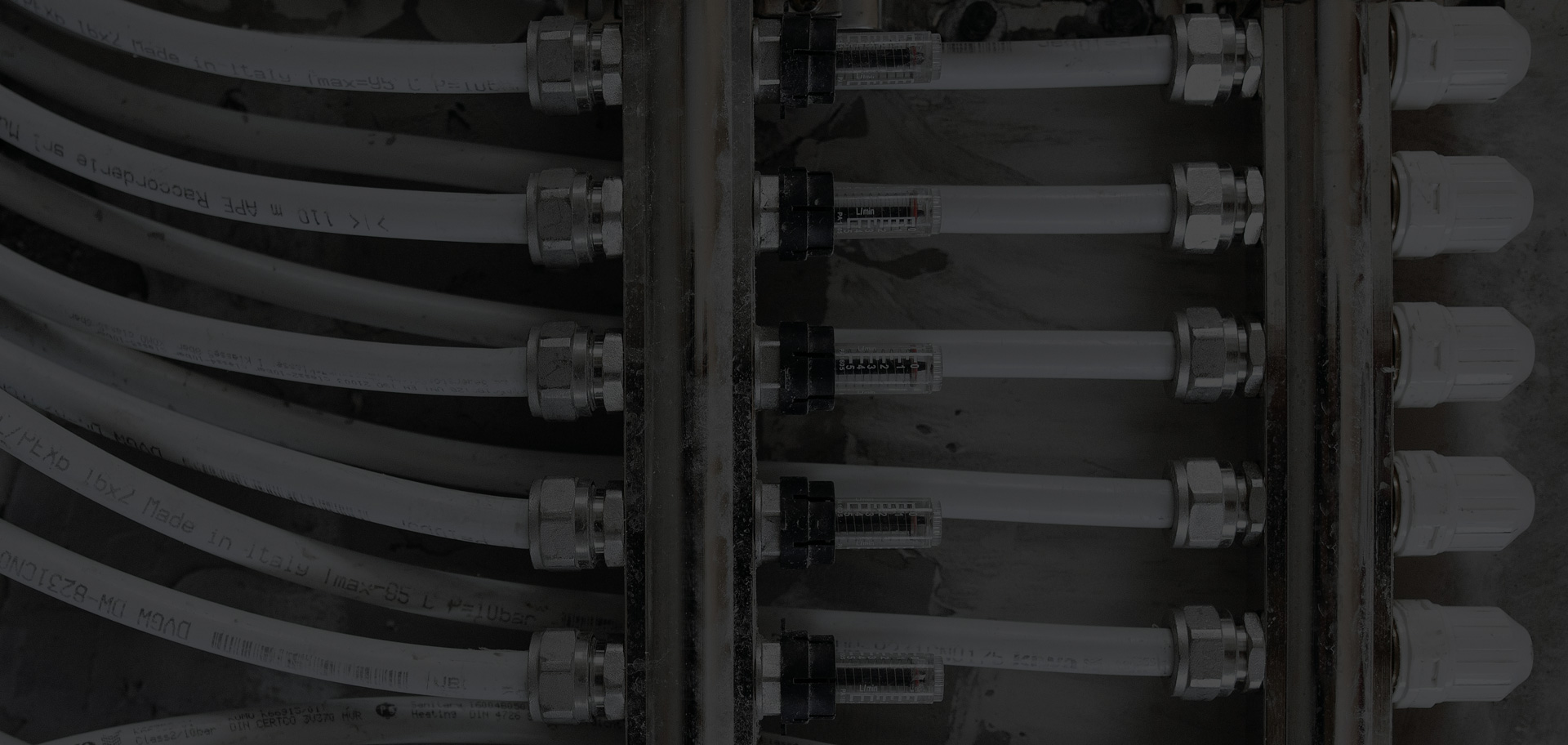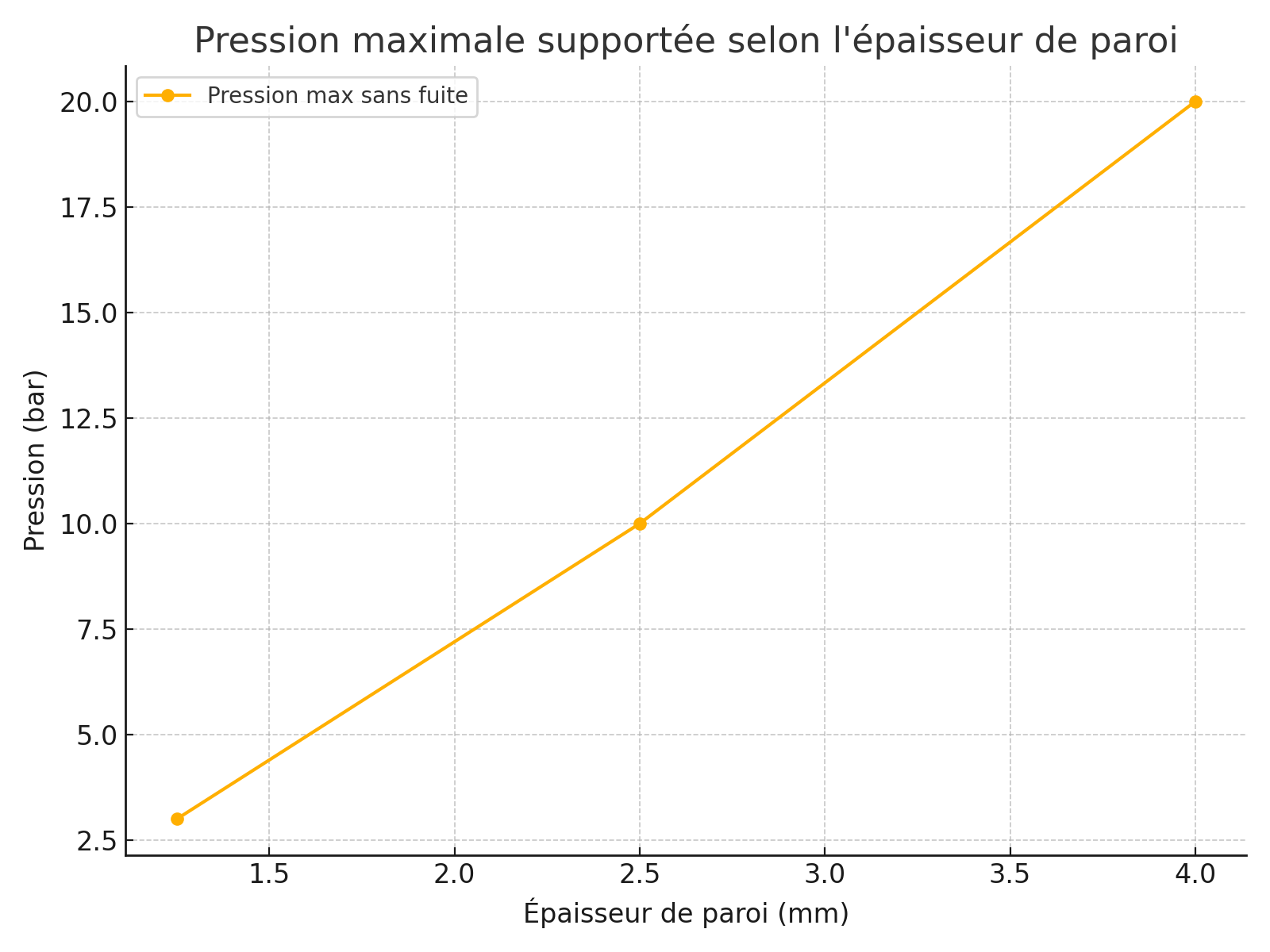One of the main limits to the use of additive manufacturing in the fluid systems industry is the ability of printed parts to withstand hydraulic stresses without leaking or breaking. Conventional solutions often involve costly post-processing to compensate for the natural porosity of FDM or SLS-type technologies.
In this context, Multi Jet Fusion (MJF) technology, combined with the highly reusable PA12 material, stands out for its ability to produce parts with excellent intrinsic sealing properties, without further processing. This article summarizes the results of characterization tests carried out on samples printed in HP MJF, in applications subject to hydraulic pressures of up to 20 bar.
Objective: evaluate the pressure resistance of parts printed with MJF
The study involved qualifying the mechanical behavior and sealing under pressure of printed containers with different geometries (sphere, cylinder, cube) and wall thicknesses (1.25 mm, 2.5 mm, 4 mm). All samples were produced in PA12 on HP Jet Fusion 4200, then subjected to a series of tests at 25°C under water pressure.
Three main objectives:
-
Determine the optimum geometric and dimensional configurations to guarantee tightness.
-
Evaluate the breaking strength of printed parts.
-
Compare MJF's performance with other AM technologies available on the market.
Results: sealing performance according to wall thickness and geometry
1. Static pressure behavior (7h test)
Leak tests were carried out at 3, 10 and 20 bar. The results show a direct dependence on geometric variables:
Recommended wall thickness (spherical and cylindrical)
| Test pressure | 1.25 mm | 2.5 mm | 4 mm |
|---|---|---|---|
| 3 bar | ✅ | ✅ | ✅ |
| 10 bar | ❌ | ✅ | ✅ |
| 20 bar | ❌ | ❌ | ✅ |
The 2.5 mm specimens ensured a perfect seal up to 10 bar, while the 4 mm ones withstand up to 20 bar without leaking.
Impact of geometry on pressure resistance
| Container shape | 3 bar | 10 bar | 20 bar |
|---|---|---|---|
| Sphere | ✅ | ✅ | ✅ |
| Cylinder | ✅ | ✅ | ✅ |
| Cube | ❌ | ❌ | ❌ |
Geometries with flat surfaces (e.g. cube) should be avoided for pressure applications. The sphere is mechanically optimal, as it minimizes localized stresses.
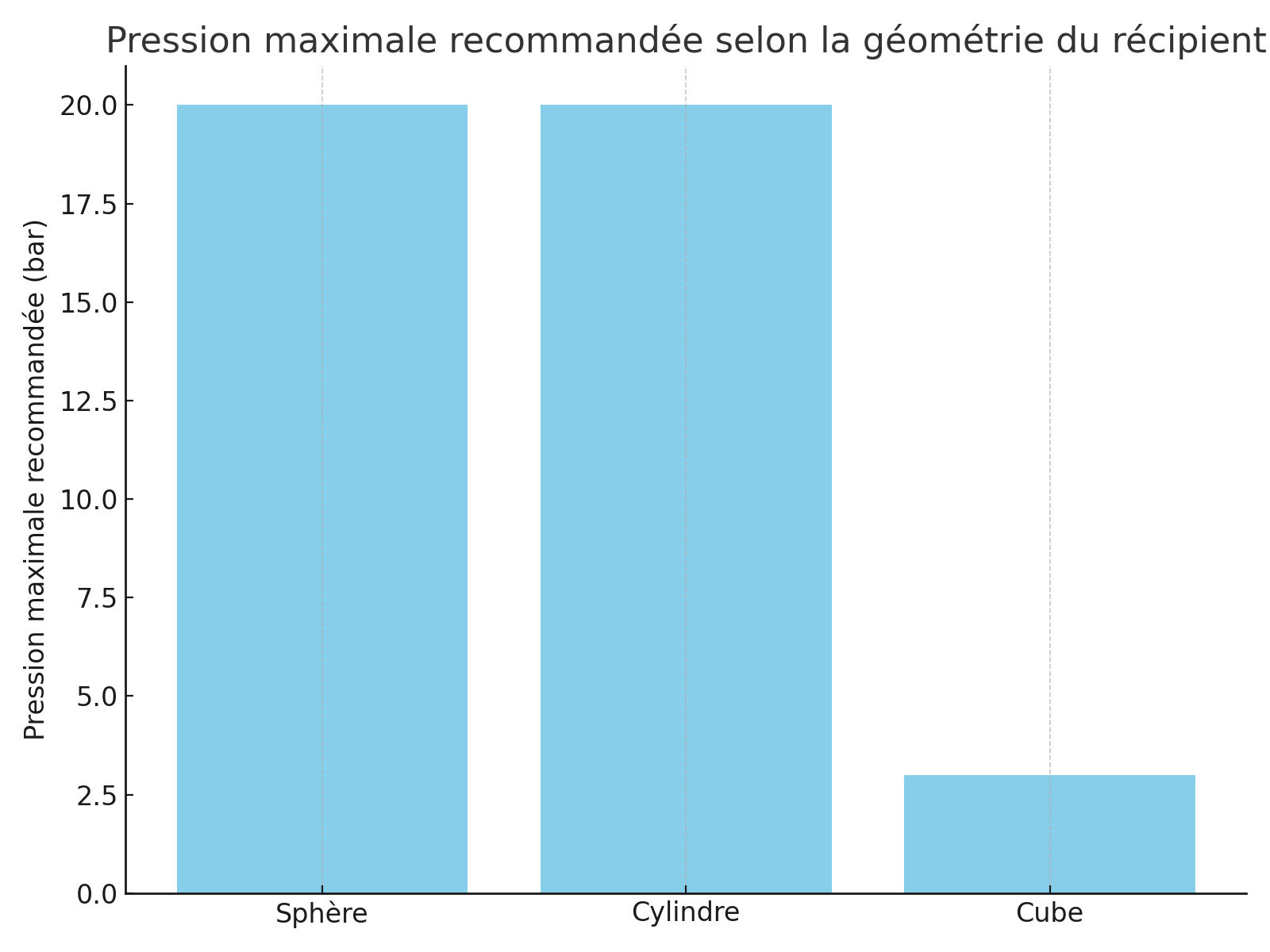
Tensile strength: up to 45.9 bar without failure
A fracture test carried out on a cylindrical specimen (thickness 2.5 mm) demonstrated that the material printed in MJF could withstand a progressive pressure build-up of up to 45.9 bar, without breaking. This value exceeds typical requirements for many industrial applications, notably in low-pressure hydraulics, HVAC and valves.
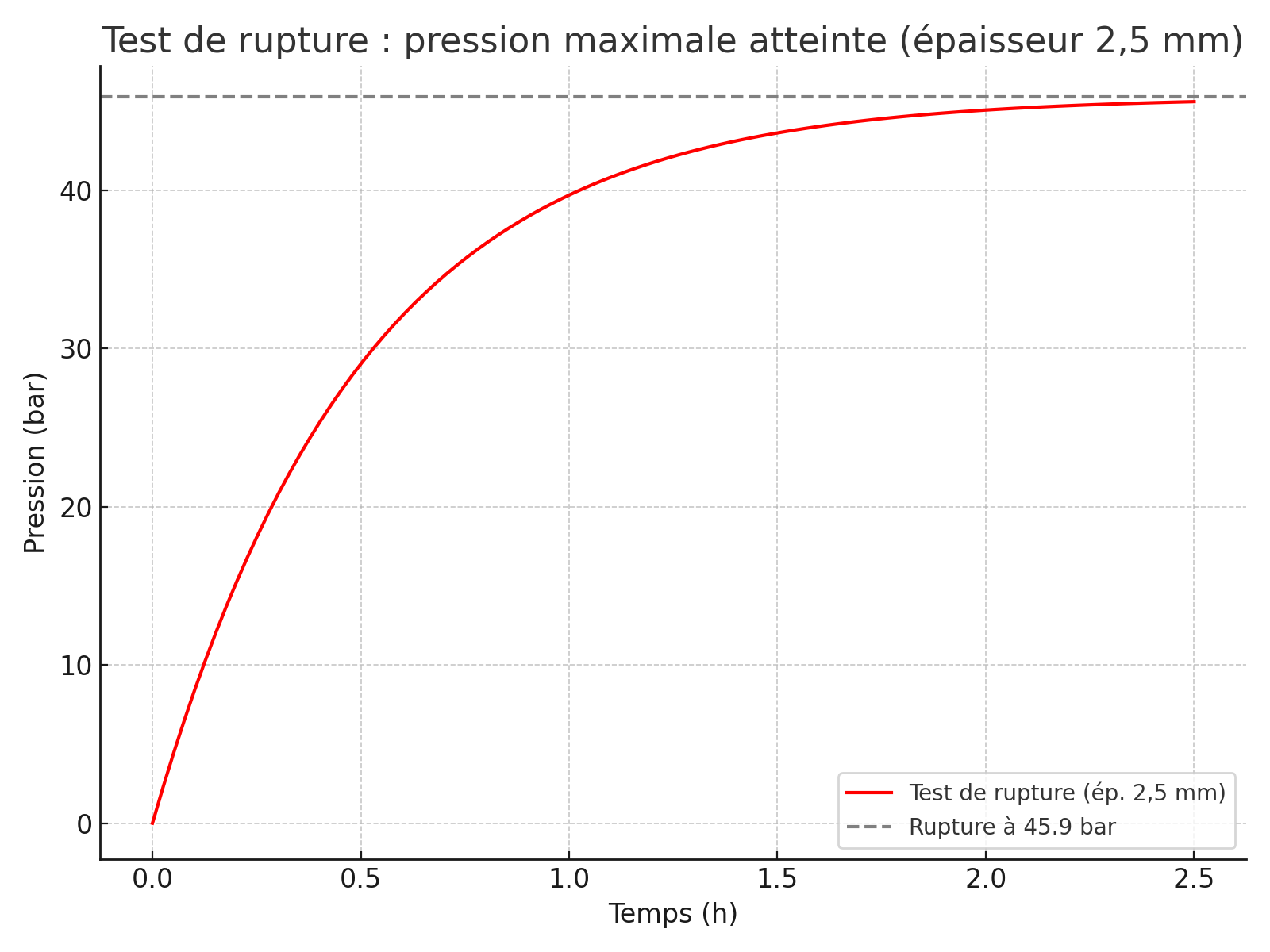
Comparison with other additive processes
| Technology | Material | Max. pressure reached (thickness 2.5 mm) |
|---|---|---|
| HP MJF | PA12 | 45 bar |
| SLS | PA2200 | 45 bar |
| ALS | VisiJet Tough | 25 bar |
| Jetting | VeroClear / SR200 | 30-40 bar |
MJF technology is on a par with SLS, with the added benefits of greater dimensional accuracy, higher recyclability and better isotropic behavior.
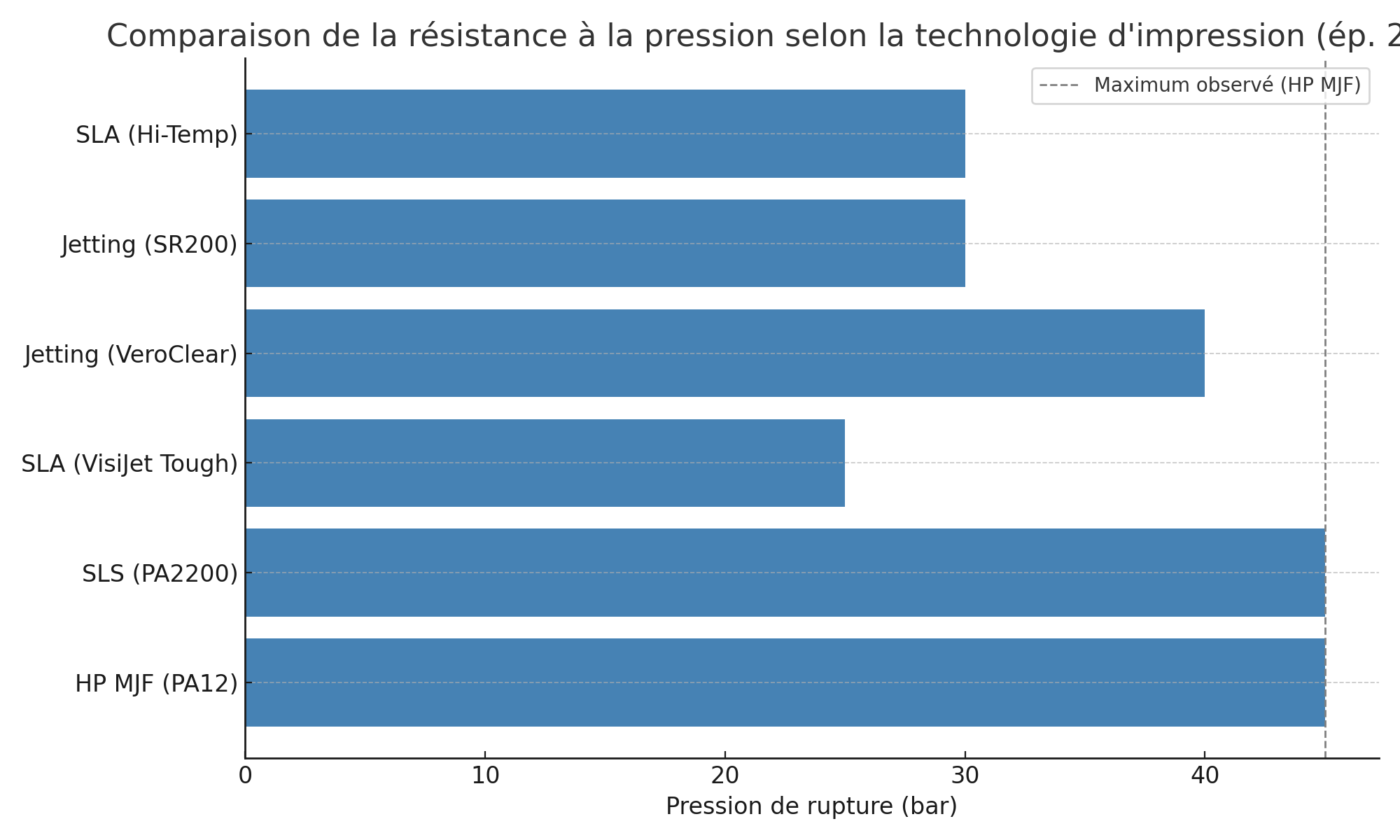
Dimensional stability and creep
The parts tested showed slight initial creep when pressurized, due to the thermoplastic nature of PA12. This phenomenon is kept under control as long as the applied stress remains below the creep limit. In the case of systems subjected to constant pressure over long periods, this viscoelastic behavior should be taken into account in the design calculations.
Chemical compatibility of PA12
Chemical resistance tests demonstrate the excellent inertness of PA12 to the main industrial fluids:
-
Total resistance: alkalis, hydrocarbons, oils, alcohols, esters, ketones, DOT3, petrol.
-
Moderate effects only with: hot water, chlorinated solvents (such as trichloroethylene).
This allows integration in harsh environments without accelerated degradation.
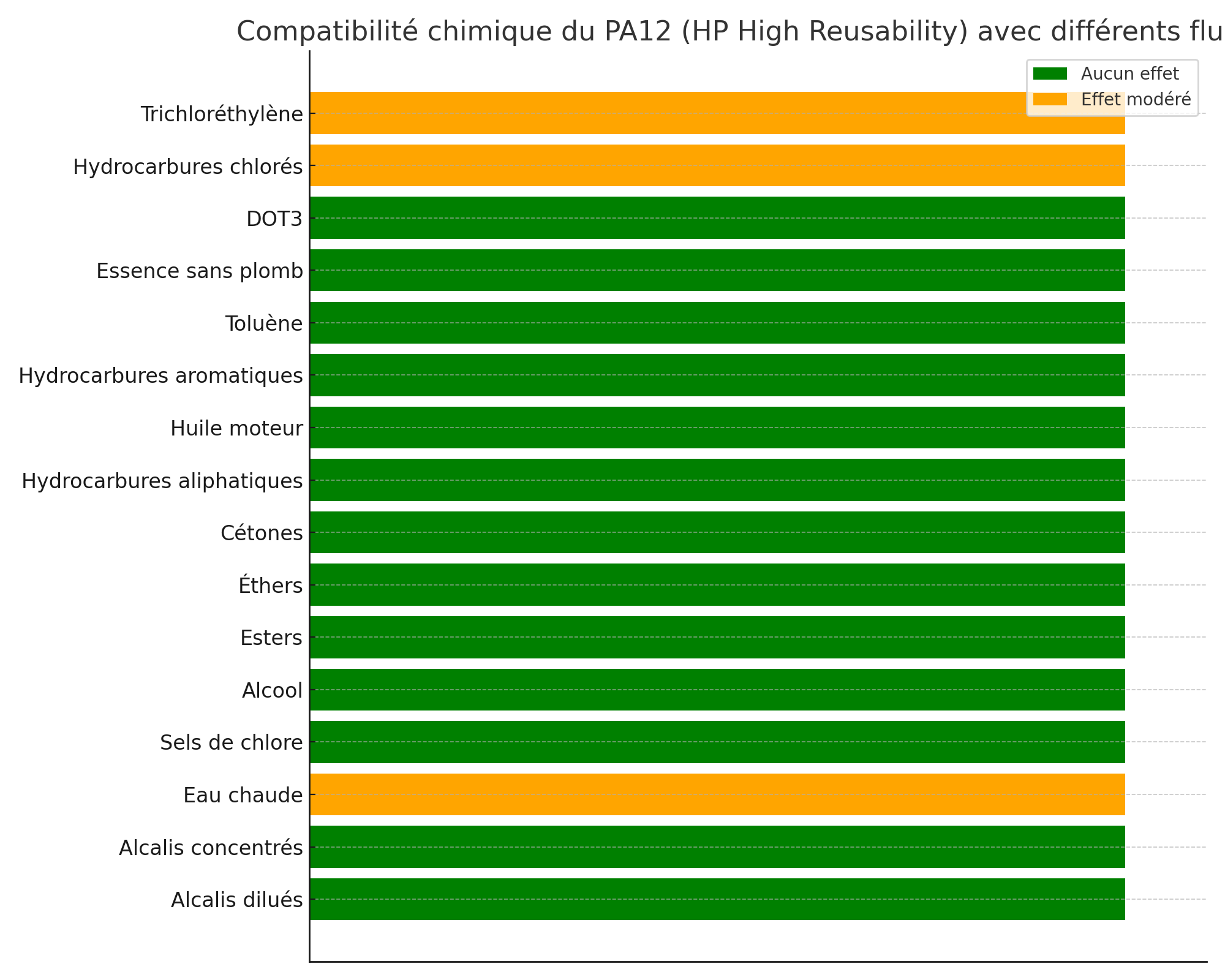
Design recommendations for engineering offices
Here are some best practices for designing fluidic parts with HP MJF :
-
Favour curved or cylindrical shapes to homogenize stress.
-
Avoid wide, flat walls without structural reinforcement.
-
Prefer thickness ≥ 2.5 mm for pressures ≥ 10 bar.
-
Allow a mechanical safety margin of 2 to 3 times the operating pressure.
-
Use an inner radius ≥ 2 mm to limit stress concentrations.
In brief
✅ HP MJF technology with PA12 enables the production of sealed parts without post-processing, reliable under pressure, with high geometric precision.
✅ It is a credible alternative to injection-molded parts for the production of complex fluidic components or in limited series.
✅ Thanks to its high mechanical strength, chemical compatibility and stable long-term behavior, it integrates perfectly into demanding industrial environments.
Need feedback or simulations?
At 3DPROD, we support design offices and R&D departments in the qualification of printed parts for specific applications: hydraulic tests, cyclic stresses, deformation verification, topological optimization and printing on HP 4200/5200 equipment.
📩 Contact our team for a technical feasibility analysis or a pre-production run validated to your specifications.
3D Prod tip : Test your projects by making your quotes online via our dedicated platform: Get your quote online!
